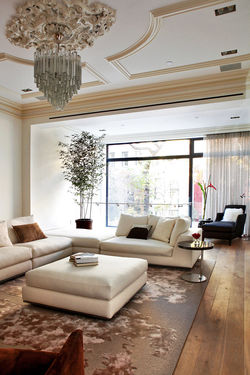CHARLES STREET TOWNHOUSE
A townhouse on a tree lined street in Manhattan's West Village designed for a client's desire to celebrate and explore the interface between old and new, existing and introduced, and revision and reinvention.
The four story townhouse at Charles is situated on a charming tree lined block in the heart of the original Greenwich Village Historic District . Originally constructed as one of a series of three rowhouses in 1867 by Bartlett Smith, the brownstone façade and painted wood cornice is a typical example of the French Second Empire style common to rowhouses built in that period. Whilst the front façade has remained relatively unchanged throughout the building’s history, the interior had seen several renovations throughout the years which had not been so kind to it’s historic bones.
Several historic details on the parlor level like the base moldings, crown moldings, ceiling medallions, and fireplace mantles throughout the house had managed to survive. These historic elements were very dear to our clients, yet they also recognized the value of contemporary space planning, details and amenities. Their design directive to TCA was threefold: first to preserve these historic elements, secondly to create a dialogue between these preserved elements and a decidedly contemporary envelope and finally to create a functioning layout complete with modern amenities that would serve the family into the future.
To address this dialogue between old and new, an architectural language was created to highlight the moments at which they both needed to interact. Original base and crown moldings appear to pass through glass entry vestibules at both the garden and parlor levels. Recessed metal reveals encircle the perimeter of preserved fireplace mantles demarcating old and new. A modern chandelier is juxtaposed against a restored ceiling medallion. Door jambs lined in non directional stainless steel celebrate the use of contemporary reveals while being discrete enough to allow the original moldings to add a degree of texture and finesse. In all instances, the interplay between old and new proves that these elements can not only coexist but can celebrated together.

 |  |  |
|---|---|---|
 |  |  |
 |  |  |
 |  |  |
 |  |